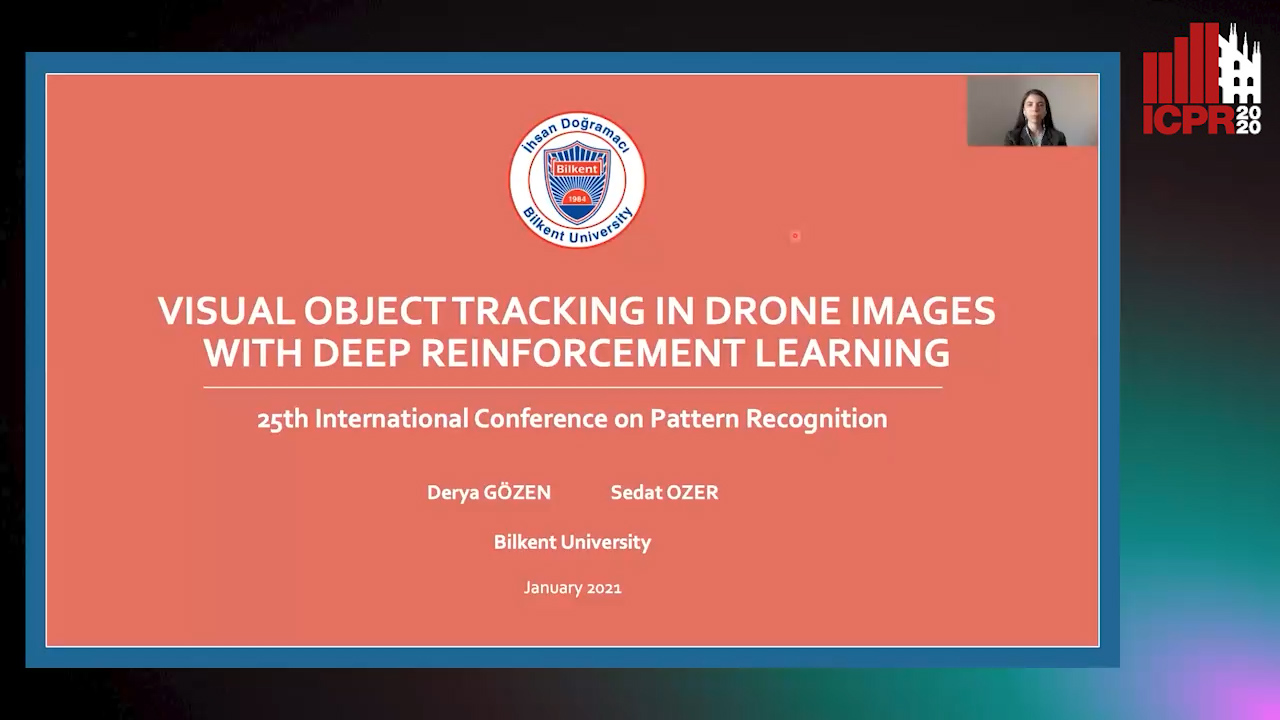Sedat Ozer
Paper download is intended for registered attendees only, and is
subjected to the IEEE Copyright Policy. Any other use is strongly forbidden.
Papers from this author
SyNet: An Ensemble Network for Object Detection in UAV Images

Auto-TLDR; SyNet: Combining Multi-Stage and Single-Stage Object Detection for Aerial Images
Recent advances in camera equipped drone applications and their widespread use increased the demand on vision based object detection algorithms for aerial images. Object detection process is inherently a challenging task as a generic computer vision problem, however, since the use of object detection algorithms on UAVs (or on drones) is relatively a new area, it remains as a more challenging problem to detect objects in aerial images. There are several reasons for that including: (i) the lack of large drone datasets including large object variance, (ii) the large orientation and scale variance in drone images when compared to the ground images, and (iii) the difference in texture and shape features between the ground and the aerial images. Deep learning based object detection algorithms can be classified under two main categories: (a) single-stage detectors and (b) multi-stage detectors. Both single-stage and multi-stage solutions have their advantages and disadvantages over each other. However, a technique to combine the good sides of each of those solutions could yield even a stronger solution than each of those solutions individually. In this paper, we propose an ensemble network, SyNet, that combines a multi-stage method with a single-stage one with the motivation of decreasing the high false negative rate of multi-stage detectors and increasing the quality of the single-stage detector proposals. As building blocks, CenterNet and Cascade R-CNN with pretrained feature extractors are utilized along with an ensembling strategy. We report the state of the art results obtained by our proposed solution on two different datasets: namely MS-COCO and visDrone with \%52.1 $mAP_{IoU = 0.75}$ is obtained on MS-COCO $val2017$ dataset and \%26.2 $mAP_{IoU = 0.75}$ is obtained on VisDrone $test-set$. Our code is available at: https://github.com/mertalbaba/SyNet}{https://github.com/mer talbaba/SyNet
Visual Object Tracking in Drone Images with Deep Reinforcement Learning

Auto-TLDR; A Deep Reinforcement Learning based Single Object Tracker for Drone Applications
Abstract Slides Poster Similar
There is an increasing demand on utilizing camera equipped drones and their applications in many domains varying from agriculture to entertainment and from sports events to surveillance. In such drone applications, an essential and a common task is tracking an object of interest visually. Drone (or UAV) images have different properties when compared to the ground taken (natural) images and those differences introduce additional complexities to the existing object trackers to be directly applied on drone applications. Some important differences among those complexities include (i) smaller object sizes to be tracked and (ii) different orientations and viewing angles yielding different texture and features to be observed. Therefore, new algorithms trained on drone images are needed for the drone-based applications. In this paper, we introduce a deep reinforcement learning (RL) based single object tracker that tracks an object of interest in drone images by estimating a series of actions to find the location of the object in the next frame. This is the first work introducing a single object tracker using a deep RL-based technique for drone images. Our proposed solution introduces a novel reward function that aims to reduce the total number of actions taken to estimate the object's location in the next frame and also introduces a different backbone network to be used on low resolution images. Additionally, we introduce a set of new actions into the action library to better deal with the above-mentioned complexities. We compare our proposed solutions to a state of the art tracking algorithm from the recent literature and demonstrate up to 3.87\% improvement in precision and 3.6\% improvement in IoU values on the VisDrone2019 dataset. We also provide additional results on OTB-100 dataset and show up to 3.15\% improvement in precision on the OTB-100 dataset when compared to the same previous state of the art algorithm. Lastly, we analyze the ability to handle some of the challenges faced during tracking, including but not limited to occlusion, deformation, and scale variation for our proposed solutions.